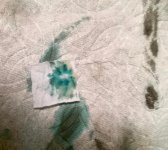andyo5
Member
I have a S&W M&P MOE model with a 16" barrel. I am shooting Hornaday 55g bullets at around 3000 fpm. For some reason, I seem to get alot of copper fouling, more than I would expect for a fairly new rifle that has never shot corrosive ammunition (see photo). The photo shows the 6th patch to come out of the bore after wetting with solvent. The prior patches had even more blue color than this. Solvents are Shooter's Choice MC-5, and Hoppe's #9. The patch in the photo shows the result with Hoppe's, after several hours of soaking. I had shot less than 100 rounds since the prior cleaning. I have never used an ammonia based cleaner in this barrel.
My question: Does this seem excessive to you, or does it match your own experience with M&P ARs.
Thanks!
My question: Does this seem excessive to you, or does it match your own experience with M&P ARs.
Thanks!
Attachments
Last edited:

